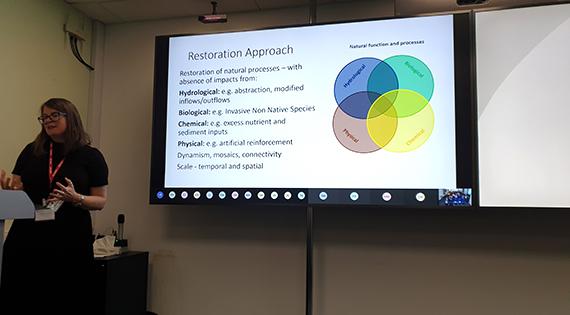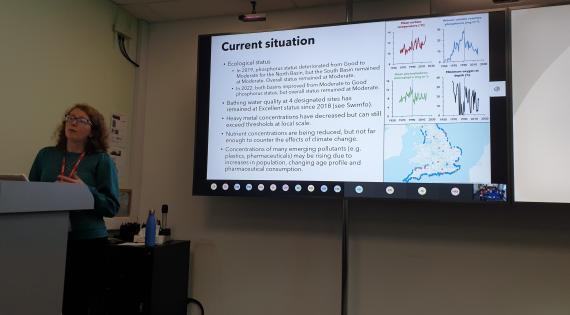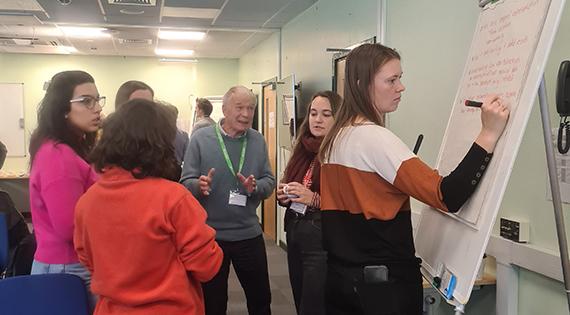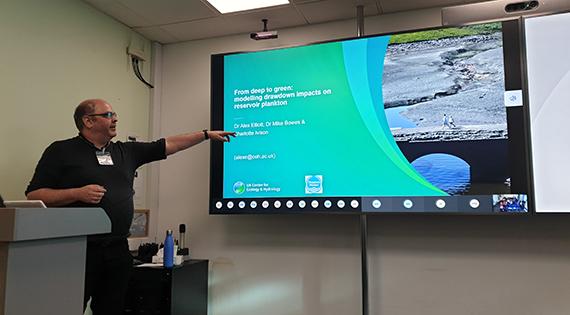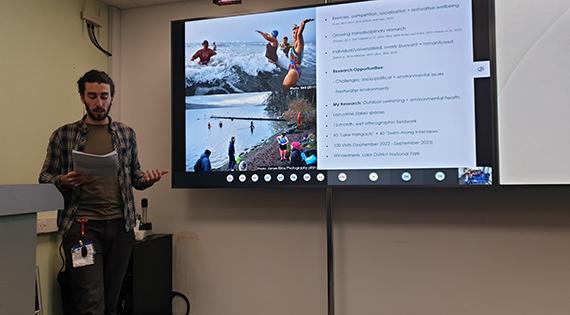A rainy Wednesday in November 2023 marked our eighth annual Cumbrian Lakes Research Forum bringing together freshwater experts from research, government agencies, charities and businesses working in and around the Cumbrian Lakes. This year’s event was the first hybrid iteration and we welcomed 20 online attendees as well as 30 in-person at UKCEH Lancaster. Heather Moorhouse summarises the discussions…
This year’s Cumbrian Lakes Research Forum focused on water quality, quantity, access, and freshwater biodiversity, with examples from both the Lake District and further afield, highlighting wide relevance of freshwater research and the importance of cross-catchment and interdisciplinary dialogue.
Flood histories
Our first presenter was Daniel Schillereff from King’s College London who spoke about reconstructing the flood histories of Cumbrian Lakes using sediment cores from Brotherswater, Ullswater, Bassenthwaite Lake and Buttermere. He described how building a picture of flood histories can help us to understand flood-rich versus flood-poor periods in time and how historical trends can help predict future flood trajectories.
By measuring lake sediment characteristics such as grain size, geochemical composition, and radioactive isotopes, Daniel and his team determined flood records over centennial timescales. They found a relationship between the North Atlantic Oscillation and winter floods, and that landscape modification has increased the vulnerability of Cumbrian catchments to flood hazards. The importance of site-selection and understanding the processes of sediment delivery were key recommendations from his experience (see Convergent human and climate forcing of late-Holocene flooding in Northwest England).
Phosphorus histories
Continuing to fly the flag for palaeolimnology, second speaker Madeleine Moyle from the University of Liverpool described her work with John Boyle on reconstructing phosphorus (P) histories. Much like flood histories, long-term P records are rare. P is often the limiting nutrient for algal growth not just in Cumbrian lakes but many freshwaters - even small inputs can change a lake’s ecology, with many lowland lakes experiencing nutrient enrichment from human activity (see Towards a history of Holocene P dynamics for the Northern Hemisphere).
Madeleine and John’s work has focused on using P recorded in the sediments as well as models to infer in-lake and catchment P inputs to assess and help improve appropriate current in-lake total P targets. A synthesis of records from the northern hemisphere showed the centennial scale influence of human induced land-use change and why in the present-day context of climate change and socio-cultural factors, historical baselines may not be the most meaningful targets for restoration. Using sediment records can help provide the catchment context and feed into discussions that ensure realistic targets to address present-day disruption of ecosystem functioning.

